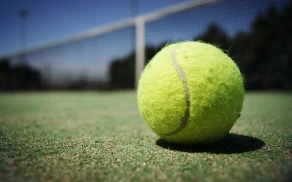Anyone For Tennis? Osteopathy and Common Tennis Injuries
With Wimbledon now in full swing, tennis courts are the busiest they have been all year. Whether you play avidly all year round or dust off your racket only for the summer months, all tennis players have similarities and susceptibility to injury.

It is not just the direct strain that the body goes through when serving, spinning, smashing and sledgehammering the ball that causes musculoskeletal pathology. There are many factors that are often overlooked that may predispose injury and contribute to the manifestation of pain. Osteopathic management offers a full assessment of your biomechanics to find the underlying cause for pain that you are experiencing. Using a range of manual techniques such as soft tissue and articulation we treat acute injuries and acute and chronic pain. We also offer advice on self management and how to prevent recurrent injury.
In tennis and other racket sports our joints and the soft tissues surrounding them are particularly prone to overuse injuries due to the repetitive motions required when playing. Tennis players are also prone to traumatic injury due to the fast pace of a game, changing direction quickly and stopping and starting.
As osteopaths we commonly see traumatic injuries to the lower limb and repetitive strain injuries to the upper limb associated with racket sports. In the lower limb ankle strains and sprains and knee injuries are among the most prevalent. In the upper limb overuse injuries are seen in the wrist, elbow and in the shoulder. The most notorious repetitive strain injury is ‘tennis elbow’ or Lateral epicondylitis as it is more formally known, with the overall incidence of this injury in tennis players reported to be between 35 – 51%. Other common injuries associated with tennis are carpal tunnel syndrome, rotator cuff tendonitis, achilles tendonitis and back pain.
If anything is holding you back this season, please don’t hesitate to contact us. Find more information on how we can help you at https://www.kaneandross.co.uk.

What is “tennis elbow”?
In the forearm there are many small muscles. Most of these attach to the bony prominences of the elbow (the epicondyles), these are at the end of the humerus also known as the funny bone! These small muscles act to flex and extend the wrist as well as to stabilise it. Lateral epicondylitis is the inflammation of the tendons of these small extensor muscles causing pain at their attachment point on the lateral epicondyle of the elbow. Particularly the tendon of the extensor carpi radials brevis muscle. Pain is experienced due to both inflammation and periosteal irritation, where the surface of the bone is irritated.
Tennis Elbow can arise from the repetitive movement of the wrists causing weakening to the extensor muscles and subsequent damage and inflammation as described above. There is a high incidence of lateral epicondylitis in tennis players due to the repetitive movement and increased contraction of the extensor muscles when performing the backhand stroke.
